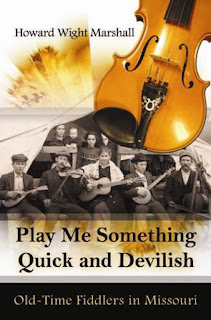Musial by James N. Giglio
In the most comprehensive assessment of baseball legend Stan Musial's
life and career to date, James N. Giglio places the St. Louis Cardinal
star within the context of the times (Great Depression and wartime/postwar America) and the issues then prevalent in professional
baseball, particularly race and the changing economics of the game.
Giglio illuminates how the times shaped Musial and delves further into
his popular image as a warm, unfailingly gracious role model known for
good sportsmanship and devotion to family.
Why did you choose to
write about Musial?
I have always been interested in sports history,
especially baseball during the Musial era. I saw the value of
sports history provided that one could place it in the context of our
social history. Insights can come from that. I grew up in the
Musial era; the book enabled me to connect with my youth and to that
time.
What were the
challenges you faced while researching the book?
First of all,
sports figures do not write letters, and they don't usually save the letters
they received. So, there is the absence of primary sources that one can
customarily rely on in doing political and diplomatic history and even more
traditional social history, for that matter. I combated that problem
by sending out a questionnaire to over a thousand ball players who competed
with or against Musial. (detailed in the preface of the book). I also did a
lot of interviewing. Moreover, there is a lot of mythology connected with
sports figures that found its way in the sports sections of newspapers or
in sports magazines. One has to put that stuff aside. Sports
figures, Musial included, tend to be overly sensitive about writers
digging into their personal lives, perhaps, sometimes with good reason.
Superstars especially wish to retain their hero image and sometimes
resent any attempts to humanize them.
Where did the names
'Stash' and 'Stan the Man' originate?
Stan's father in Donora, Pennsylvania,
called him Stashu, a Polish nickname. It soon became Stash
(sounding like Stush). Consequently, beginning in his youth, all of
Musial's Donora friends called him that and so did some Cardinal players early
in Musial's career. In the post World War II era, Musial used
to clobber Brooklyn Dodger pitching especially at Ebbets Field.
In 1946 Brooklyn fans started to chant "Here comes the man"
when he came to bat. Sportswriter Bob Broeg, of the St. Louis
Post-Dispatch, wrote about that and that is how it
began.
What is your favorite part
of the book?
The chapter titled "Anatomy of a Superstar"
because it was there that I best defined him as a person. Biography should
encompass both a person's career and his or her personality and
character. I thought I did the latter best in that chapter.
Did Musial enjoy playing
or watching other sports?
As a high schooler he was an excellent
basketball player who could have competed at the college level. The
high school football coach wanted him to compete, but Musial chose not
to. He also became an above average golfer. As far as I could tell he
enjoyed watching all major sports.
Since your book was first published
in 2001 have any noteworthy things happened for Musial since
then?
The most important event occurred on February
15, 2011, when Musial received from President Obama the Presidential
Medal of Freedom. That came not only for his performance as a superstar,
but for his character and for his service as baseball's unofficial ambassador
following his playing days.
I think he would would most like to be remembered as a kind and decent person, one who loved his family and the St. Louis community, especially the fans who were never denied his autographs. It meant much to him that he played an important role in the Cardinals' three World Series championships. He was also proud of his lengthy, durable career that included a batting average of .331 with 3,630 hits and 725 doubles, at the time of his retirement a National League record.


